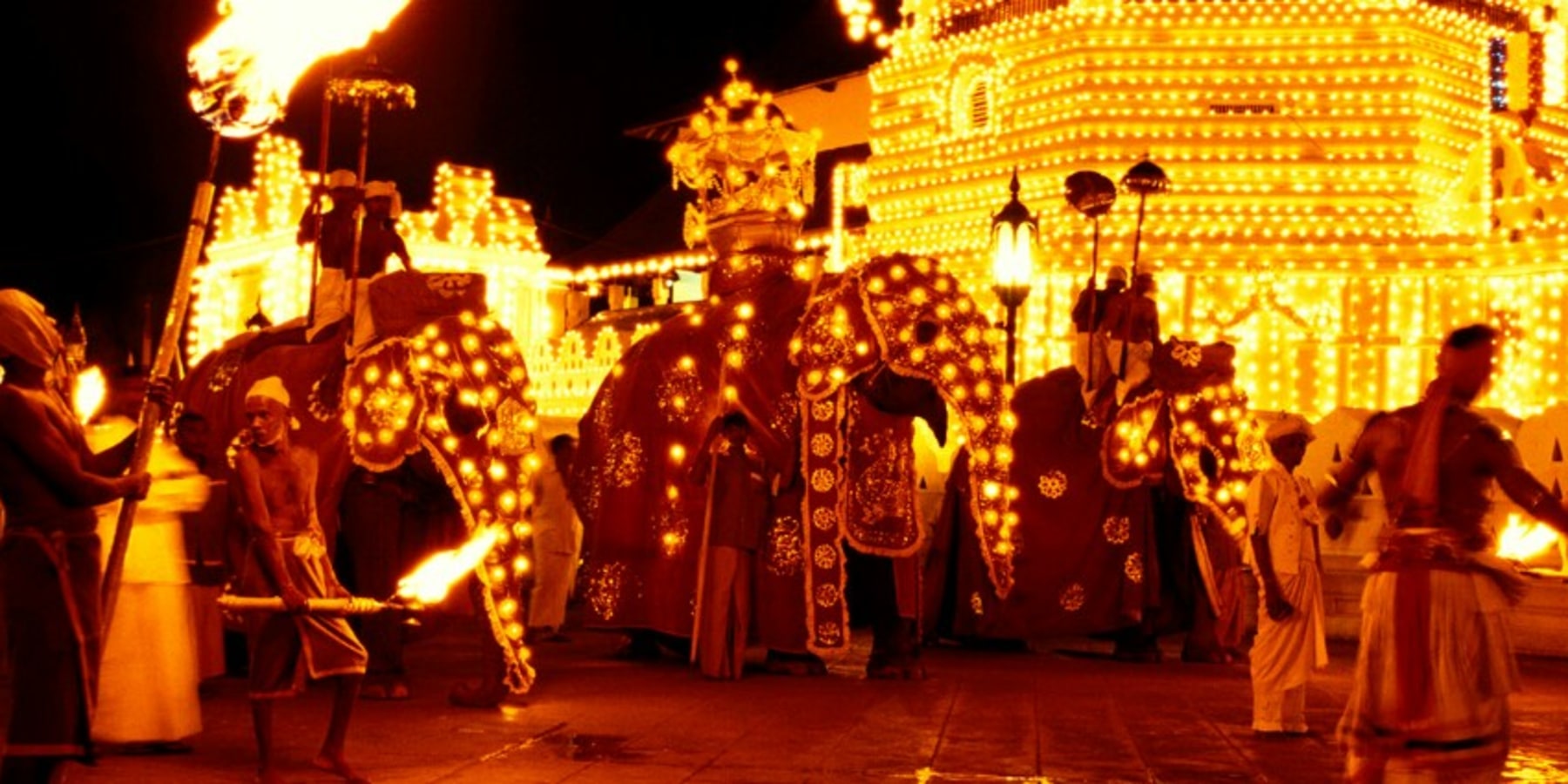
Kandy Esala Perahera Pageant Procession of Sri Lanka, the most spectacular religious procession in Asia, that last ten days, is held annually at the medieval royal city of Kandy.Beginning with the full moon poya day on the Buddhist month of Esala. It is very grand with elegant costumes. Happening in July or August in Kandy, it has become a unique symbol of Sri Lanka. It is a Buddhist festival consisting of dances and richly-decorated Elephants. There are fire-dances, whip-dances, Kandyan dances and various other cultural dances. The elephants are usually adorned with lavish garments. The festival ends with the traditional 'diya-kepeema'.
The significance of this Kandy Esala Perahera Pageant Procession is to invoke blessings of the gods to give the farmers rain to cultivate their crops. This ritual is performed by carrying the sacred tooth relic of the Buddha through the city streets which is done with great ceremony.
The tooth relic was brought to Ceylon (Sri Lanka) in the year 310 AD and the first perehera was performed in Anuradhapura, the first capital where the sacred relic was housed. Even as the capitals were shifted for security reasons due to invasions, the tooth relic went with it too and was much revered and always in the custody of the king. Finally finding a permanent resting place in the hill capital of the last Sinhalese kindom Kandy, It lies in the "Dalada Maligawa" (Palace of the Tooth Relic) which was built by king Wimaladharma suriya in the 16th century. This three-storey building erected solely for the purpose of housing. The Sacred Relic still stands and is the most visited and important temple of Sri Lanka.
The ritual of the Esala Perahera Pageant Procession continues in Kandy with more and more people attending each year to watch majestic tusker proudly parade the streets of the ancient Sinhalese kingdom followed by over more than a hundred elephants with the custodians and other officials dressed in the traditional Sinhalese attire of chieftains riding them. The sound of blowing conch shells and whip cracking starts off the excitement or the approaching perahera. The beating of at least three types of traditional drums, the Kandyan dancers, Acrobats, and other artists that perform in the light of flame torches certainly would take you back in a time machine.

